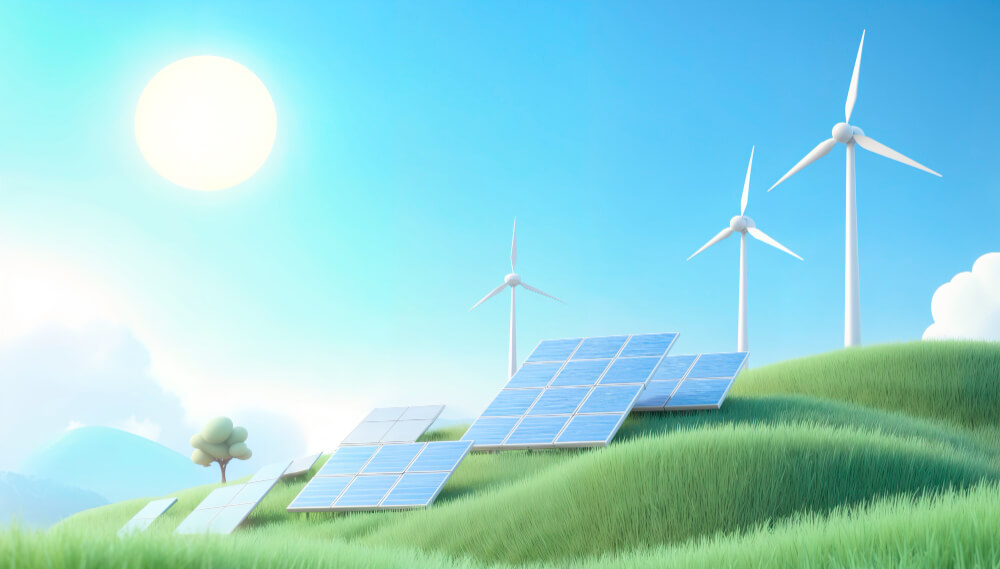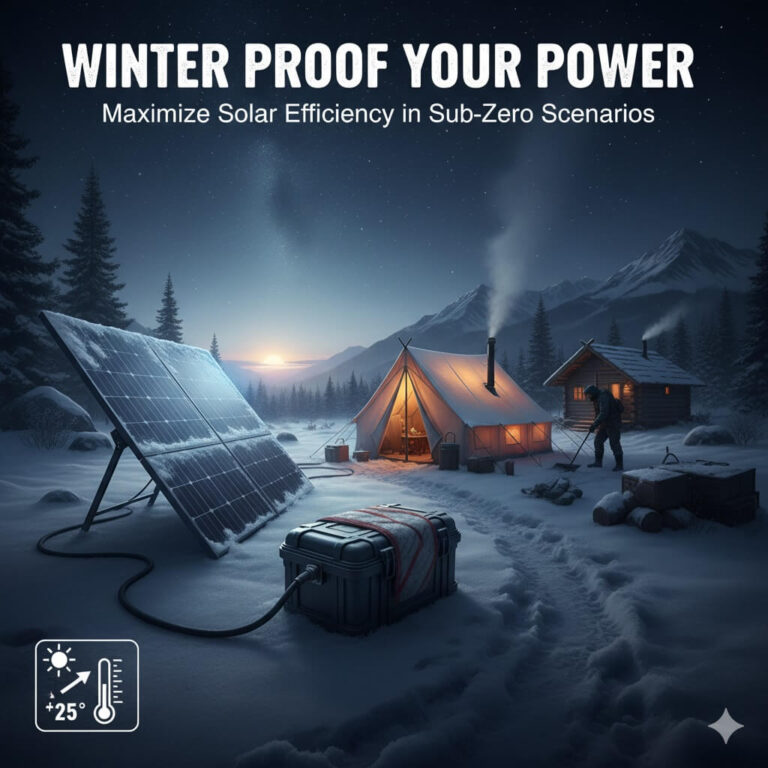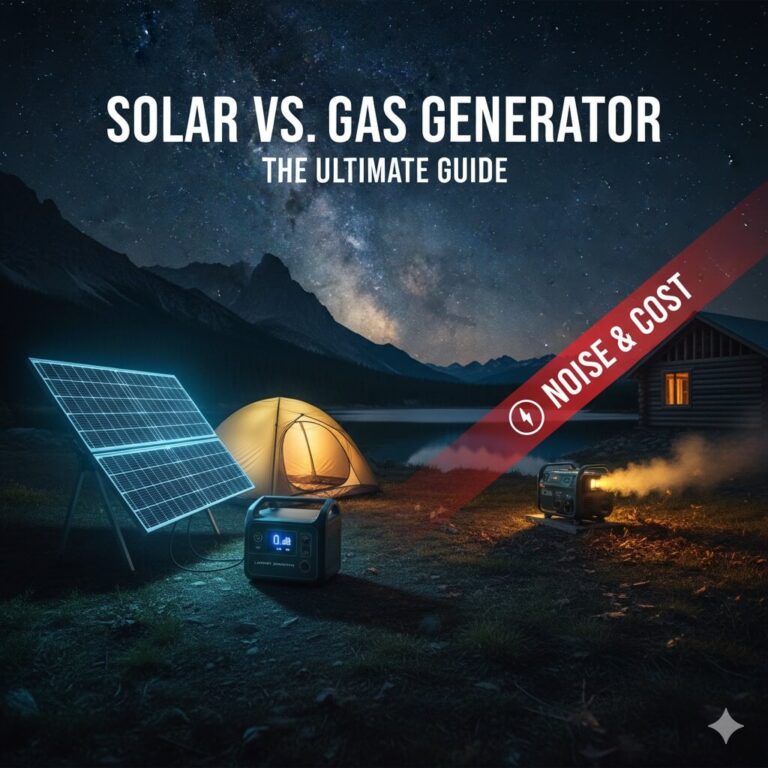Green Energy 101: Your Essential Guide to Understanding Renewable Electricity

In a world increasingly concerned about climate change, energy independence, and sustainable living, “green energy” and “renewable electricity” dominate conversations. Headlines frequently highlight record-breaking solar installations, colossal offshore wind farms, and groundbreaking geothermal projects, signaling a global energy landscape in rapid transition. Yet, for many, the world of clean energy still feels complex, filled with specialized jargon and conflicting information. What do these terms truly mean? How do these technologies work? And what tangible impact do they have on our planet, economies, and daily lives?
This guide aims to demystify understanding renewable electricity for everyone. We will explore its core concepts, delve into the main types of green electricity, highlight their undeniable benefits, and examine global adoption trends. We will also discuss the inherent challenges and innovative solutions driving this vital transition. This article serves as your essential primer, breaking down the basics of Green Energy 101. It illustrates how green energy is not just a distant policy goal but a tangible, beneficial, and increasingly accessible reality powering our planet and homes for a cleaner, more secure future.
- 1. Green vs. Renewable: Clarifying the Clean Energy Spectrum
- 2. The Big 5: Main Types of Green Electricity Sources
- 3. Why Green Energy? The Tangible Benefits
- 4. Global Green Energy Snapshot: Trends & The Path Forward (2024-2025)
- 5. Overcoming the Hurdles: Challenges in the Green Energy Transition
- 6. Green Energy & Your Home: Incentives & Impact on Bills
- 7. Green Energy in Action: Inspiring Real-Life Success Stories
- Conclusion: The Empowering Future of Renewable Electricity
- Frequently Asked Questions (FAQs) About Green Energy 101
- Q: What is the main difference between “green energy” and “renewable energy”?
- Q: How does green energy help combat climate change?
- Q: Can green energy power my entire home, and what are the financial benefits?
- Q: What are the biggest challenges facing the full transition to green energy?
- Q: Which type of green energy is currently growing the fastest globally?
1. Green vs. Renewable: Clarifying the Clean Energy Spectrum
Before exploring specific technologies, let’s clarify the nuances between “green energy” and “renewable energy.” Though often used interchangeably, a subtle yet important distinction exists:
- Renewable Energy Defined: This term refers to energy from natural sources that replenish faster than consumed. Examples include sunlight, wind, flowing water, geothermal heat, and biomass. Their inexhaustible nature is the key characteristic.
- Green Energy Defined: This is a more specific subset of renewable energy. To qualify as “green,” an energy source must not only be renewable but also have minimal or zero negative environmental impact throughout its entire lifecycle—from production to operation. This means it avoids releasing harmful greenhouse gases, contributing to pollution, or significantly damaging ecosystems.
The Nuance: All green energy is renewable, but not all renewable energy is necessarily “green.” For example, large-scale hydropower dams, while renewable, can cause significant ecological impacts on river systems and local communities. Similarly, biomass energy, derived from renewable organic matter, produces some greenhouse gas emissions when burned. Its “green” status depends heavily on sustainable sourcing and a complete lifecycle analysis.
For this Green Energy 101 guide, we primarily focus on widely accepted “green” electricity sources that genuinely boast a low or zero environmental footprint during operation.
2. The Big 5: Main Types of Green Electricity Sources
Our transition to a sustainable future largely relies on several key green electricity technologies. Each harnesses a unique natural force:
2.1. Solar Power: Harnessing the Sun’s Rays
- How it Works: Solar power captures the sun’s energy. Most commonly, photovoltaic (PV) panels convert sunlight directly into electricity using the photovoltaic effect. When photons from sunlight strike the semiconductors in the panel, they free electrons, generating an electric current. Solar thermal systems, less common for electricity generation, use mirrors to concentrate sunlight, producing heat for steam turbines.
- Key Benefits: Solar energy is incredibly abundant and offers decentralized deployment potential, from rooftops to vast deserts. Its costs have dramatically plummeted in recent decades, making it highly competitive in the energy market.
2.2. Wind Power: Capturing Nature’s Breeze
- How it Works: Wind turbines convert the wind’s kinetic energy into electricity. As wind blows, it spins the turbine blades, which connect to a rotor. This rotor then drives a generator, producing electricity.
- Key Benefits: Wind power is a clean, increasingly cost-effective source. It is highly scalable, with both onshore wind farms and rapidly growing offshore wind farms (which benefit from stronger, more consistent winds) significantly contributing to global grids.
2.3. Hydropower: The Power of Flowing Water
- How it Works: Hydropower leverages the kinetic energy of flowing or falling water. In conventional dam systems, water stored in a reservoir releases, flows through turbines, and spins them to generate electricity. “Run-of-river” systems divert a portion of a river’s flow through turbines without creating a large reservoir.
- Key Benefits: Hydropower provides a reliable and dispatchable power source, especially when water is stored in dams, allowing for controlled energy release. It boasts significant existing global capacity and can quickly adjust power output to meet demand.
2.4. Geothermal Energy: Tapping Earth’s Inner Heat
- How it Works: Geothermal energy taps into the Earth’s internal heat. Wells are drilled into underground reservoirs of hot water or steam. This hot fluid rises to the surface to drive turbines, generating electricity. Beyond power generation, many use geothermal energy directly for heating and cooling buildings.
- Key Benefits: Geothermal plants deliver constant, reliable baseload power, operating continuously regardless of weather conditions. They feature very low operational emissions and a minimal land footprint per megawatt produced.
2.5. Biomass Energy: Electricity from Organic Matter
- How it Works: Biomass energy converts organic materials into electricity. This can involve directly burning materials like wood, agricultural waste, or specific energy crops. Alternatively, these materials can transform into biogas or biofuels, which then fuel generators.
- Key Benefits: Biomass can utilize waste products and offers a dispatchable power source, also helping manage organic waste.
- Important Considerations: Its “green” status critically depends on sustainable sourcing practices (e.g., replanting trees for wood biomass) and a thorough analysis of its lifecycle emissions, as burning biomass does produce some greenhouse gases.
Beyond these “Big 5,” emerging technologies like ocean energy (harnessing tidal currents and wave power) show promise. Green hydrogen, produced by using renewable electricity to split water, also gains traction as a clean energy carrier for hard-to-decarbonize sectors.
3. Why Green Energy? The Tangible Benefits
The shift to green energy is driven by compelling reasons, extending far beyond environmental ideals. It offers profound benefits for our planet, economies, and public health:
- Environmental Protection:
- Climate Change Mitigation: This is the most critical benefit. Green energy drastically reduces greenhouse gas (GHG) emissions, particularly carbon dioxide (CO₂) and methane, the primary drivers of global warming. Unlike fossil fuels, solar, wind, hydro, and geothermal generate virtually zero operational emissions.
- Cleaner Air & Water: Replacing fossil fuels eliminates harmful air pollutants like sulfur oxides (SOx), nitrogen oxides (NOx), and particulate matter, which cause respiratory diseases and acid rain. It also reduces water pollution linked to fossil fuel extraction and processing.
- Economic Advantages:
- Cost Savings: Once constructed, renewable energy sources have significantly lower operating costs because their “fuel” (sun, wind, water) is free. This leads to stable long-term energy prices, protecting consumers from volatile fossil fuel markets.
- Job Creation: The renewable energy sector is a powerful engine for job creation. Investments in green energy infrastructure, manufacturing, installation, and maintenance consistently create more jobs per dollar invested than traditional fossil fuel industries.
- Energy Independence & Security: Relying on domestic renewable resources lessens a nation’s dependence on imported fossil fuels, bolstering national energy security and fostering greater geopolitical stability.
- Improved Public Health: Reduced air and water pollution directly translates to better public health outcomes, including fewer instances of respiratory illnesses, cardiovascular diseases, and other pollution-related health issues.
- Inexhaustible Resources: Unlike finite fossil fuels, renewable energy sources harness naturally replenished processes, ensuring a virtually inexhaustible supply of energy for future generations.
4. Global Green Energy Snapshot: Trends & The Path Forward (2024-2025)
The global energy landscape is undergoing a monumental transformation, with renewable electricity leading the charge. International Energy Agency (IEA) forecasts provide a clear picture of this rapid expansion:
- Rapid Expansion: Renewables are consistently the fastest-growing source of electricity globally. Declining costs, supportive government policies, increasing energy demand, and the urgent need for climate action drive this growth.
- Key Milestones & Forecasts (IEA Data):
- 2024: For the first time, combined solar PV and wind generation are projected to surpass hydropower as the largest source of renewable electricity.
- 2025: Renewables-based electricity generation is forecast to collectively overtake coal-fired generation as the largest source of electricity worldwide. This marks a monumental shift.
- 2026: Both wind power and solar PV generation are expected to surpass nuclear power globally.
- 2027: Solar PV electricity generation is projected to become the single largest renewable power source, surpassing wind.
- 2029: Solar PV electricity generation is forecast to surpass hydropower, solidifying its position as the largest renewable power source.
- By 2030, wind-based generation is also expected to surpass hydropower.
- Dominance of Solar and Wind: Renewable electricity’s share in the global mix is forecast to expand from 30% in 2023 to an impressive 46% by 2030. Importantly, solar PV and wind power account for almost all of this unprecedented growth, underscoring their pivotal role in the energy transition.
- Overall Energy Mix: Renewables collectively contributed a substantial 38% of global energy supply growth in 2024, demonstrating their accelerating impact across the entire energy system.
These trends highlight not just a shift but a decisive surge towards green energy, confirming its role as the backbone of our future power supply.
5. Overcoming the Hurdles: Challenges in the Green Energy Transition
Despite the overwhelming advantages and rapid growth, the full transition to green energy presents challenges. Addressing these is crucial for a smooth and effective global energy transition:
- Intermittency & Variability: Solar and wind power generation inherently depends on weather conditions. This intermittency causes output fluctuations, challenging grid operators who must continuously balance supply and demand. Solutions include diversifying the renewable energy mix, employing energy storage, and utilizing smart grid technologies.
- Infrastructure & Grid Modernization: Existing electricity grids were designed for centralized, fossil fuel-based power generation. Integrating decentralized, fluctuating renewable sources demands significant investment in upgrading transmission lines and distribution networks and implementing advanced smart grid technologies capable of handling two-way power flow and real-time management.
- Initial Investment Costs: While the Levelized Cost of Electricity (LCOE) for renewables is falling, the upfront capital costs for large-scale projects or residential installations can still be substantial. This often necessitates financial incentives or innovative financing models.
- Siting & Permitting: Identifying suitable locations for large solar or wind farms and navigating complex regulatory and permitting processes can be lengthy and challenging, sometimes facing local opposition.
- Resource Availability: While renewable resources are globally abundant, optimal locations for specific technologies (e.g., areas with strong, consistent winds or high solar insolation) vary regionally. This means a diverse portfolio is often needed.
- Energy Storage: The need for reliable, cost-effective, and long-duration energy storage is paramount. It ensures a consistent power supply when renewable generation is low, smoothing out supply fluctuations.
6. Green Energy & Your Home: Incentives & Impact on Bills
The shift to green energy isn’t just about global trends and utility-scale projects; it directly impacts individual households and can significantly influence your electricity bill.
6.1. Potential for Lower Electricity Bills:
- Direct Savings: By installing rooftop solar panels, homeowners generate their own electricity, dramatically reducing the amount of power they need to purchase from the utility company.
- Net Metering/Feed-in Tariffs: Many regions offer policies like net metering or feed-in tariffs. These allow homeowners to sell any excess electricity their solar panels generate back to the grid, earning credits on their bill or even direct payments. This further reduces overall energy costs.
- Battery Storage: Integrating a battery storage system with solar panels allows homeowners to store surplus solar power generated during the day. They can then use this stored power at night, during power outages, or during peak demand periods when utility rates are highest. This maximizes self-consumption and optimizes savings, especially with “time-of-use” electricity tariffs.
- Long-term Cost Stability: Investing in green energy for your home significantly reduces your exposure to the volatile price fluctuations of fossil fuels. This provides more predictable and stable energy costs over decades.
6.2. Government Support: Incentives for Green Energy Adoption
Governments worldwide offer various incentives to encourage green energy adoption, making the initial investment more affordable:
- Federal Incentives (U.S. Example: Inflation Reduction Act—IRA): The Investment Tax Credit (ITC), also known as the Residential Clean Energy Credit, provides a substantial 30% federal tax credit for qualifying residential solar installations. This includes not just the panels, but also inverters, racking, wiring, and, crucially, battery storage systems. The landmark Inflation Reduction Act (IRA) extended this credit through 2032, making solar a very attractive investment.
- State and Local Incentives: Beyond federal support, many states and local municipalities offer additional incentives. These include property tax exemptions for solar installations, solar easements, or specific net metering policies tailored to their regions. While the 30% federal credit is well-established, always check for local policy changes, as some discussions about future incentives might create urgency for homeowners considering installation.
7. Green Energy in Action: Inspiring Real-Life Success Stories
The impact of green energy is best understood through real-world examples of communities and nations that have successfully embraced renewable electricity:
- Babcock Ranch, Florida (USA): Often hailed as the “first solar-powered town in America,” Babcock Ranch exemplifies sustainable urban planning. Powered by an 870-acre solar farm, the community consistently generates more electricity than it consumes, demonstrating a blueprint for resilient, self-sufficient living.
- Samsø, Denmark: This Danish island has achieved remarkable energy independence. Through a diversified mix of onshore and offshore wind turbines, solar panels, and biomass-fueled heating plants, Samsø now produces more renewable electricity than it consumes, becoming a net energy exporter.
- Reykjavík, Iceland: A global leader in renewable energy use, Reykjavík leverages its abundant geothermal resources. Nearly 100% of its heating and hot water needs are met by geothermal energy, alongside significant geothermal electricity generation, showcasing a truly sustainable urban energy model.
- Itaipú Dam, Brazil & Paraguay: One of the world’s largest hydropower plants, the Itaipú Dam exemplifies large-scale renewable generation. It provides a substantial portion of the electricity for both Brazil and Paraguay, underpinning their energy security and economic development.
These success stories underscore that the green energy transition is not merely theoretical; it’s a tangible reality, building cleaner, more resilient, and economically vibrant communities worldwide.
Conclusion: The Empowering Future of Renewable Electricity
In essence, Green Energy 101 reveals that the conversation around energy has fundamentally shifted. It’s no longer just about generating power; it’s about generating it intelligently, cleanly, and sustainably. The transition to renewable electricity, underpinned by solar, wind, hydro, geothermal, and other emerging sources, is not a distant policy goal; it’s a rapidly expanding, beneficial, and increasingly accessible reality.
This comprehensive guide to understanding renewable electricity underscores that green energy represents a fundamental shift. It provides tangible benefits for everyone—from the global environment to national economies and right down to individual electricity bills. Green energy stands as a powerful force for climate change mitigation, economic growth, and energy independence.
Are you ready to be part of the green energy revolution? Whether you are a homeowner considering rooftop solar, a business seeking sustainable energy solutions, or simply curious about our planet’s future, the time to understand and embrace renewable electricity is now. Explore how green energy can empower your life, reduce your environmental footprint, and contribute to a healthier, more prosperous planet for generations to come.
Frequently Asked Questions (FAQs) About Green Energy 101
Q: What is the main difference between “green energy” and “renewable energy”?
A: “Renewable energy” comes from sources that replenish naturally (like solar and wind). “Green energy” is a subset of renewable energy that also has minimal to no negative environmental impact throughout its lifecycle. So, all green energy is renewable, but not all renewable energy is considered perfectly “green” (e.g., large dams or some biomass).
Q: How does green energy help combat climate change?
A: Green energy sources like solar, wind, hydro, and geothermal produce little to no greenhouse gas emissions during operation, unlike fossil fuels. By replacing fossil fuel-based electricity generation, green energy significantly reduces the amount of carbon dioxide and other warming gases released into the atmosphere, directly mitigating climate change.
Q: Can green energy power my entire home, and what are the financial benefits?
A: Yes, green energy can power your entire home, often through rooftop solar panels combined with battery storage. Financially, you can reduce or eliminate your electricity bill by generating your own power. Incentives like the 30% federal solar tax credit (in the U.S.) and net metering policies (selling excess power back to the grid) further enhance savings and provide long-term cost stability against volatile fossil fuel prices.
Q: What are the biggest challenges facing the full transition to green energy?
A: Key challenges include the intermittency of sources like solar and wind (requiring energy storage and smart grids), the need for massive upgrades to existing grid infrastructure to handle decentralized power flow, and the initial investment costs for large-scale projects. Siting and permitting complexities also play a role.
Q: Which type of green energy is currently growing the fastest globally?
A: According to the International Energy Agency (IEA), solar photovoltaic (PV) and wind power are driving almost all the growth in renewable electricity globally. Solar PV is forecast to become the largest renewable electricity source by 2029, with wind following closely behind.



